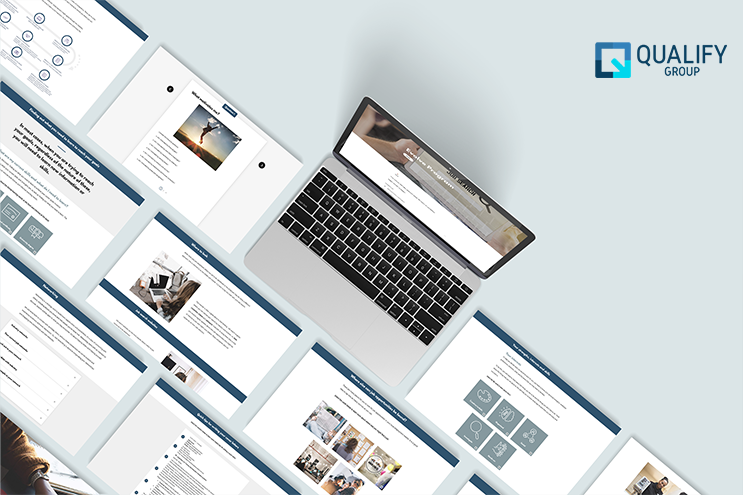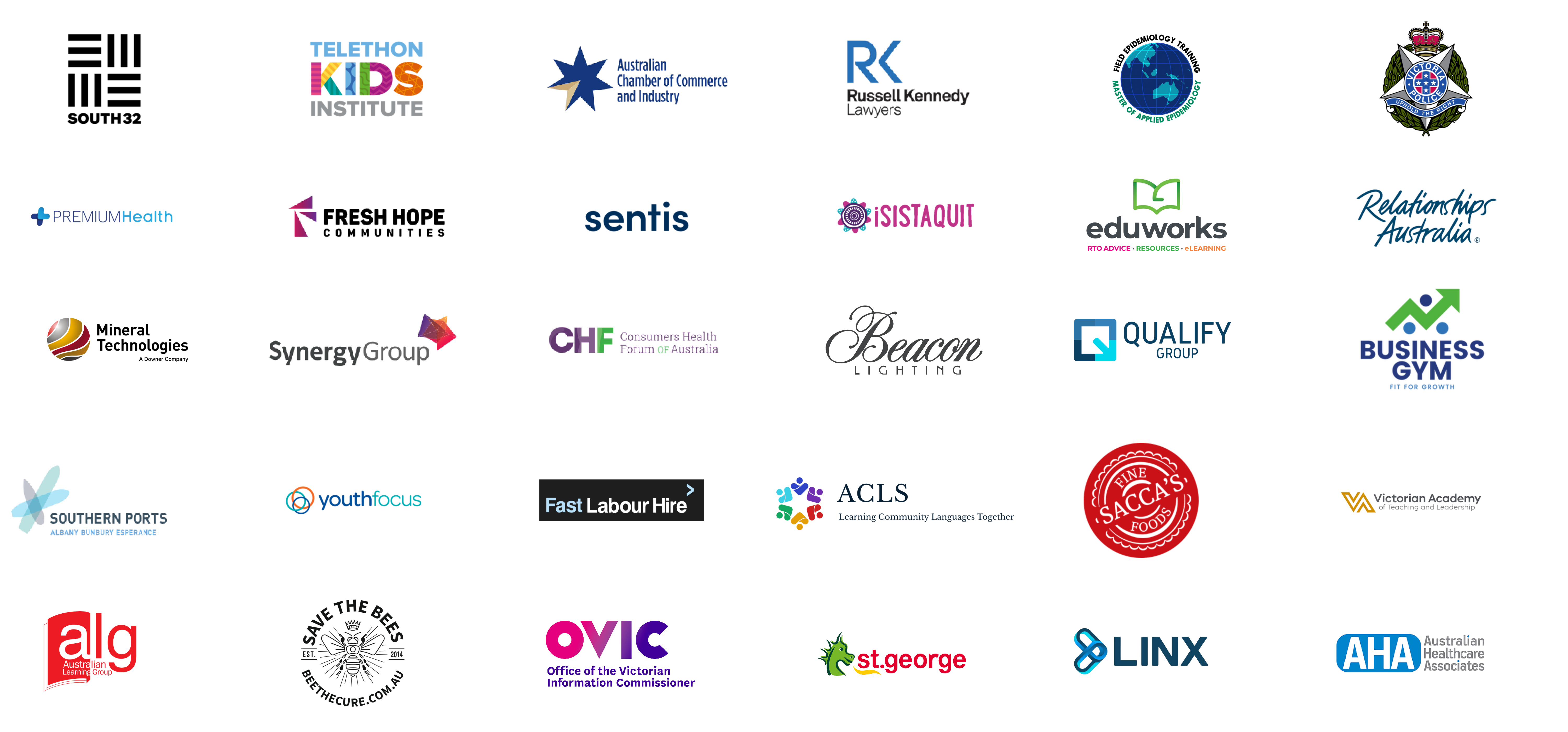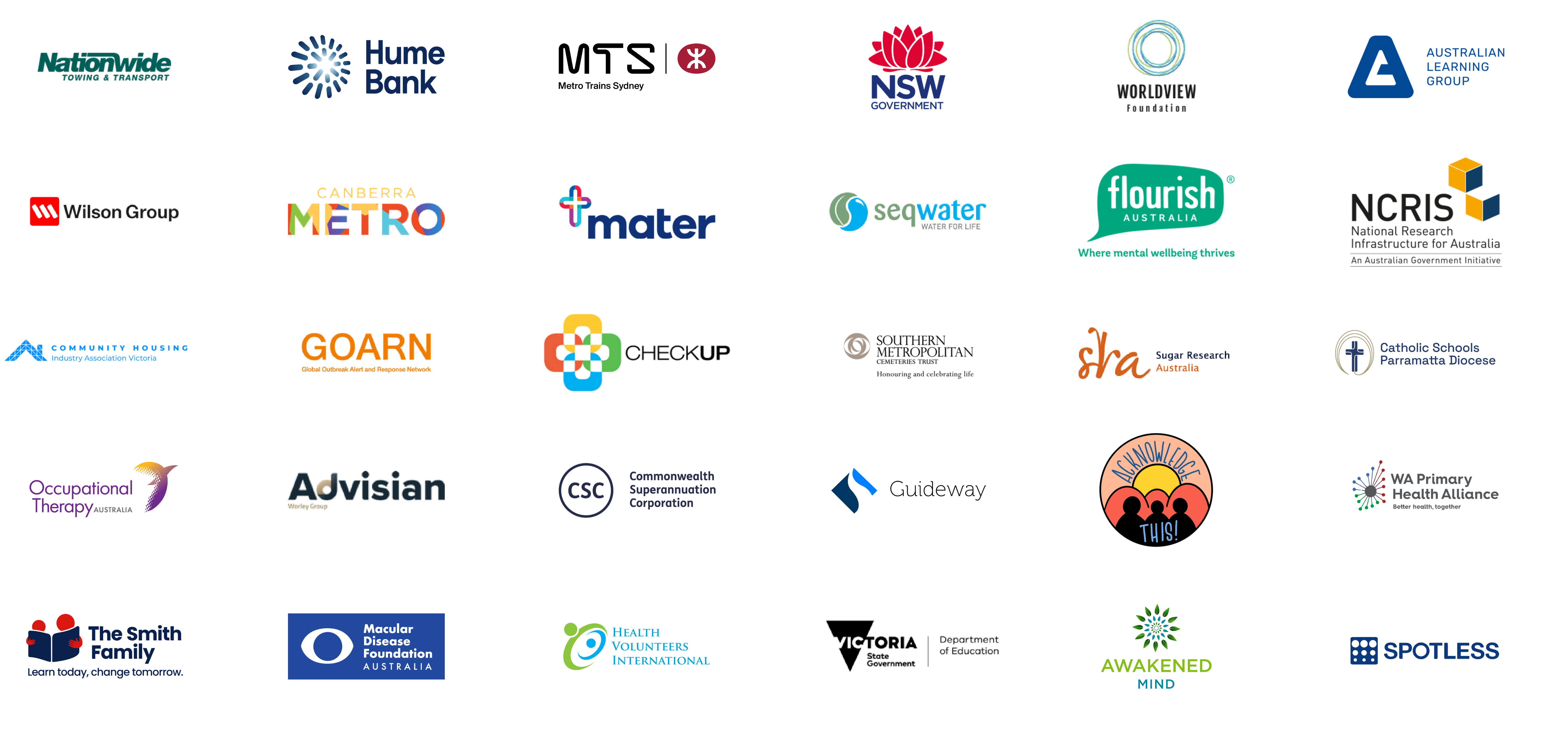The eLearning Development Company Of Choice
Discover Learning Designs is the elearning development company of choice when it comes to customised learning and development training programs. Many companies attribute their growth and success to relevant training programs but they just don’t leave it to just any elearning development company. It’s got to be DLD. We add our own innovative ways in training and development with our focus on the instructional design of highly engaging and totally reflective application-based workplace training programs and materials delivered through technology, specifically, via digital means.
Get A QUOTE FROM US TODAY!
We work closely with you to create programs that will address your company’s pain points and run it against the current skills, knowledge, and behaviours of your workforce. As an e learning development company, it’s a must for us to identify the reasons why you need the training and align these with your business goals.
We then develop the training programs that target these pain points, creating an experience for your employees that is both enriching and thoughtful through digital learning. The e learning process now becomes more personalised, making it easy for learners to absorb and retain the knowledge and learning and put them into practice.
Advantages of Learning By Doing
While DLD uses many approaches to develop training materials, we usually employ Discovery Learning. Discovery Learning is basically learning by doing. It makes training a practical one and a pleasant experience for all as it encourages the learners to actively participate in the problem-solving process. Discovery Learning requires learners to make connections to previous knowledge, basing it on their past experiences. It encourages critical thinking and creativity making the whole process memorable therefore, the knowledge learned is retained.
Discovery Learning promotes engagement, especially in group settings. Perfectly suited for collaborative activities, it pushes teamwork, cohesion, and cooperation among participants. The approach involves the analysis of data by the individual and the group where each learner’s unique experiences contribute to the proposed solutions.
This also encourages autonomous thinking among the participants, independently solving problems rather than depending on predefined company solutions. Critical thinking is also fostered by the activity, where participants brainstorm for possible solutions.

Because autonomous thinking is encouraged, learners become invested in the exercise, leading to a sense of ownership once they have put it in their suggestions. Innovative ideas are generated because of the diverse experiences of the learners, opening the floodgates of potential solutions. Due to the autonomy inherent in this approach, learners become deeply invested in the solutions they contribute to, fostering a sense of ownership.

The diversity of experiences among learners results in a multitude of potential solutions, creating a gateway to innovative problem-solving ideas. More than the engagement aspect of this approach, the real value lies in the empowerment it provides to the learners. They are pushed to proactively participate in thought and in action more than just waiting for things to settle down.
All these e learning advantages that only DLD can deliver are in your hands to enrich the lives of your employees and will impact your company’s productivity.
What our clients say
Don’t just take our word for it.
Hearing about great learning design is one thing – seeing the real impact is another. Our partners have experienced the difference firsthand, and their results speak volumes.





Q&A Section
What is meant by compliance training?
Compliance training is crucial for organizations to mitigate legal, financial, and reputational risks while fostering a culture of accountability. By educating employees on laws, regulations, and internal policies—such as workplace safety standards, data privacy laws, or anti-harassment protocols—it reduces violations that could result in fines, lawsuits, or damage to an organization’s reputation. For example, interactive simulations or branching scenarios teach employees to apply rules in real-world situations, like identifying phishing emails or responding to safety hazards.
Effective compliance training goes beyond theoretical knowledge. Studies show experiential methods, such as scenario-based learning, boost retention by up to 80%, ensuring employees not only understand policies but can act on them confidently. Digital programs, like WCAG-compliant modules, also adapt quickly to evolving regulations (e.g., GDPR updates), keeping global teams aligned with frameworks like ISO or OSHA. Automated tracking via Learning Management Systems (LMS) provides auditable records of training completion, which is critical for audits and demonstrating due diligence.
Beyond risk reduction, compliance training empowers employees to make ethical decisions, enhancing workplace trust and operational efficiency. It transforms legal obligations into actionable behaviors, equipping teams to navigate complex challenges while aligning with organizational values.
In essence, compliance training is not just a regulatory checkbox—it’s a strategic tool for building a safer, more ethical, and resilient workplace.
Why Does eCompliance Training Matter?
eCompliance training is essential for organizations to meet legal, safety, and regulatory standards while fostering accountability and minimizing risk. It ensures employees grasp critical regulations by mitigating penalties and workplace hazards through scenario-based learning, such as safety protocols for high-risk industries like construction or healthcare. Interactive methods like gamification and phishing simulations boost engagement, with studies showing up to 80% retention via experiential learning.
Digital training adapts swiftly to evolving regulations (e.g., GDPR updates) and ensures consistency across global teams, aligning with frameworks like ISO or OSHA. Automated LMS tracking provides auditable records and identifies compliance gaps, enabling proactive interventions. Cost-effective and accessible, eCompliance eliminates logistical headaches as it supports mobile-friendly, on-demand learning for remote workforces.
Programs like Discover Learning’s WCAG-compliant modules and the “Dynamic Security Principles” course for corrections officers—which blends microlearning, workshops, and buddy systems—demonstrate how tailored eLearning transforms compliance into actionable skills. Ultimately, eCompliance safeguards organizations, empowers employees, and drives operational excellence, embodying the ethos: “More compliance. Less risk.”
What Outcome Do I Need from the Training?
To determine the outcomes needed from training, start by aligning the program with specific organizational and learner goals. Key outcomes often include:
Behavioral Change: Shift in employee actions (e.g., adhering to safety protocols, ethical decision-making).
Skill Mastery: Demonstrated competence in critical tasks (e.g., using compliance software, applying conflict resolution techniques).
Compliance Adherence: Ensure regulatory requirements are met (e.g., OSHA standards, data privacy laws), minimizing legal risks.
Performance Metrics: Improved KPIs (e.g., reduced incident rates, faster project completion, higher customer satisfaction).
Engagement & Retention: Higher course completion rates and knowledge retention (e.g., 80%+ retention via interactive simulations).
For example, compliance training should result in fewer violations and audit-ready teams, while leadership programs should foster measurable improvements in team collaboration or conflict resolution success rates. Use SMART objectives to define success (e.g., “Reduce workplace incidents by 30% within 6 months post-training”). Track outcomes through assessments, LMS analytics, and real-world performance data to refine programs and prove ROI.
Whats the general benefit on having ecompliance for your onboarding workforce?
Implementing eCompliance in your onboarding workforce offers significant advantages that streamline compliance adherence while enhancing efficiency and engagement. By integrating digital training into onboarding, organizations ensure new hires immediately understand critical policies, safety protocols, and legal obligations—reducing risks from day one. For example, interactive modules on workplace safety or data privacy standards teach employees to recognize hazards or handle sensitive information correctly, fostering a culture of accountability.
eCompliance training provides consistency, delivering standardized content across global teams, which is vital for industries like healthcare, construction, or finance. It also offers flexibility, allowing new hires to complete training remotely or on mobile devices, accommodating diverse schedules and locations. Real-time tracking via Learning Management Systems (LMS) ensures managers monitor progress, verify completion, and address gaps proactively—critical for audit readiness.
Moreover, digital platforms enable rapid updates to reflect evolving regulations (e.g., GDPR, OSHA), ensuring compliance remains current without logistical delays. Engaging methods like gamification, quizzes, or scenario-based simulations boost retention (up to 80% with experiential learning), making complex rules memorable and actionable.
Ultimately, eCompliance transforms onboarding from a checkbox exercise into a strategic tool that minimizes legal exposure, accelerates role readiness, and aligns new employees with organizational values from their first day.
What are the 5 key areas of compliance?
The 5 key areas of compliance critical for organizations to address are:
Workplace Health & Safety
Ensures adherence to OSHA standards, hazard protocols, and emergency procedures (e.g., fire safety, machinery operation).
Example: Training employees to identify risks in construction or healthcare settings.
Data Privacy & Security
Covers GDPR, HIPAA, or CCPA regulations to protect sensitive information (e.g., customer data, employee records).
Example: Teaching proper handling of patient health records or secure data storage practices.
Anti-Harassment & Discrimination
Addresses EEOC guidelines, anti-bullying policies, and diversity/inclusion standards.
Example: Training on recognizing unconscious bias or reporting workplace harassment.
Ethical Conduct & Anti-Corruption
Enforces anti-bribery laws (e.g., FCPA, UK Bribery Act) and corporate ethics policies.
Example: Educating employees on avoiding conflicts of interest or reporting unethical behavior.
Industry-Specific Regulations
Tailored to sector requirements (e.g., FINRA in finance, ISO standards in manufacturing, FDA compliance in pharmaceuticals).
Example: Healthcare staff training on HIPAA compliance or bankers on anti-money laundering (AML) protocols.
Why These Matter:
These areas mitigate legal risks, protect organizational reputation, and ensure operational continuity. Effective compliance training, like Discover Learning’s eCompliance programs, uses interactive modules (e.g., simulations, quizzes) to embed these principles, ensuring employees not only understand rules but apply them daily.
How elearning can be improved?
To elevate eLearning effectiveness, focus on engagement, personalization, accessibility, and real-world relevance. Here’s how, tailored to Australian contexts and compliance needs:
1. Boost Engagement with Interactive Design
- Gamification: Add badges, leaderboards, or scenario-based games (e.g., a compliance “escape room” where learners solve workplace safety puzzles).
- Branching Scenarios: Let decisions impact outcomes (e.g., choosing how to handle a privacy breach under the Privacy Act 1988).
- Microlearning: Deliver content in 5–10 minute bursts (e.g., short videos on updated WHS protocols).
2. Personalise Learning Journeys
- Adaptive Learning Paths: Use AI to adjust content difficulty based on learner performance (e.g., nurses needing extra modules on NSQHS Standards).
- Role-Specific Content: Tailor courses for different roles (e.g., hospital admins vs. clinicians in Medicare billing compliance).
3. Enhance Accessibility & Inclusivity
- WCAG Compliance: Ensure courses work with screen readers, offer captions, and use high-contrast fonts.
- Cultural Relevance: Include examples like Aboriginal cultural safety training or rural healthcare scenarios.
- Mobile-First Design: Optimise for smartphones, critical for remote workers or FIFO (fly-in-fly-out) staff.
4. Focus on Real-World Application
- Simulations: Replicate job tasks (e.g., using My Health Record systems or reporting incidents under Safe Work Australia guidelines).
- Peer Collaboration: Add discussion forums or virtual workshops for shared problem-solving (e.g., case studies on aged care compliance).
5. Leverage Data & Feedback
- Analytics Dashboards: Track completion rates, quiz scores, and engagement hotspots to refine content.
- Post-Training Support: Offer job aids (e.g., checklists for infection control) or chatbots for instant Q&A.
6. Stay Agile & Current
- Regular Updates: Refresh content to reflect changing laws (e.g., amendments to the Aged Care Quality Standards).
- Blended Learning: Combine eLearning with live webinars or on-the-job mentoring (e.g., pairing new hires with compliance mentors).
Why This Works for Australian Organisations:
- Reduces Compliance Risks: Engaging, up-to-date training ensures adherence to local laws like the Health Practitioner Regulation National Law.
- Saves Costs: Mobile-friendly, self-paced learning cuts travel and downtime expenses.
- Builds Confidence: Employees apply knowledge confidently, whether navigating Medicare claims or managing workplace hazards.
Example:
Discover Learning’s culturally responsive eLearning for Indigenous health workers uses storytelling and interactive scenarios to teach NSQHS Standards, boosting retention and practical application.
When to use elearning?
When to Use eLearning: Quick Guide
- Remote Teams: Train staff across Australia (or globally) without flying them in.
- Compliance Updates: Roll out new WHS laws, Privacy Act changes, or Medicare rules fast.
- Onboarding: Get new hires up to speed 24/7 (e.g., hospital safety protocols).
- Skills Practice: Simulate tasks (e.g., My Health Record navigation, customer service scenarios).
- Mass Training: Teach 1 or 1,000 people the same content—no extra cost.
- Busy Schedules: Let learners upskill during downtime (lunch breaks, commutes).
Avoid eLearning When:
- Hands-on physical skills are critical (e.g., surgery, machinery repair).
(Tip: Blend with in-person practice!)
Aussie Bonus: Use it for NSQHS Standards refreshers or Indigenous cultural safety training—keep teams compliant and culturally sharp.
eLearning = Consistency + Speed + 💰 Savings.
Industry experience
Every industry has unique learning challenges. We’ve solved them all.
Our approach adapts to your world while delivering consistent results. See how we’ve helped organisations like yours transform their learning outcomes.

Healthcare
Your patients get better care.
Your clinical teams will retain critical information when it matters most, reducing errors while improving care quality, patient satisfaction, and treatment outcomes.

Government
Your policy initiatives translate into real-world impact.
Your programs will more effectively communicate complex policy changes to frontline staff, ensuring consistent implementation across departments and direct benefits to the people you serve.

Finance
Your risk exposure drops dramatically.
Your teams will navigate complex regulations with confidence, spotting potential issues before they become problems while adapting smoothly to industry changes.

Mining
Your safety culture becomes unbreakable.
Experience fewer safety incidents and improved compliance, while your teams master complex procedures faster—balancing productivity with unwavering commitment to safety protocols.

Not-for-Profit
Your limited resources create maximum impact.
We help mission-driven organisations stretch learning budgets further with targeted solutions that improve service delivery and organisational effectiveness.

FMCG
Your products move from shelf to cart faster.
Your sales and marketing teams will better understand consumer behaviour and product benefits, increasing sell-through rates and strengthening retailer relationships while reducing time to proficiency for new team members.
About Discover Learning Designs
Founded in 2007, Discover Learning Designs is an elearning development company that provides instructional design services to many companies across a variety of industries throughout Sydney, Melbourne, Perth, Brisbane, and Adelaide. We provide our services to registered training organisations as well as develop AQTF-compliant and accredited learning materials. With close to 20 years of industry experience in consulting, instructional design development, and e-Learning, DLD has become the go-to training provider of many companies across Australia.
